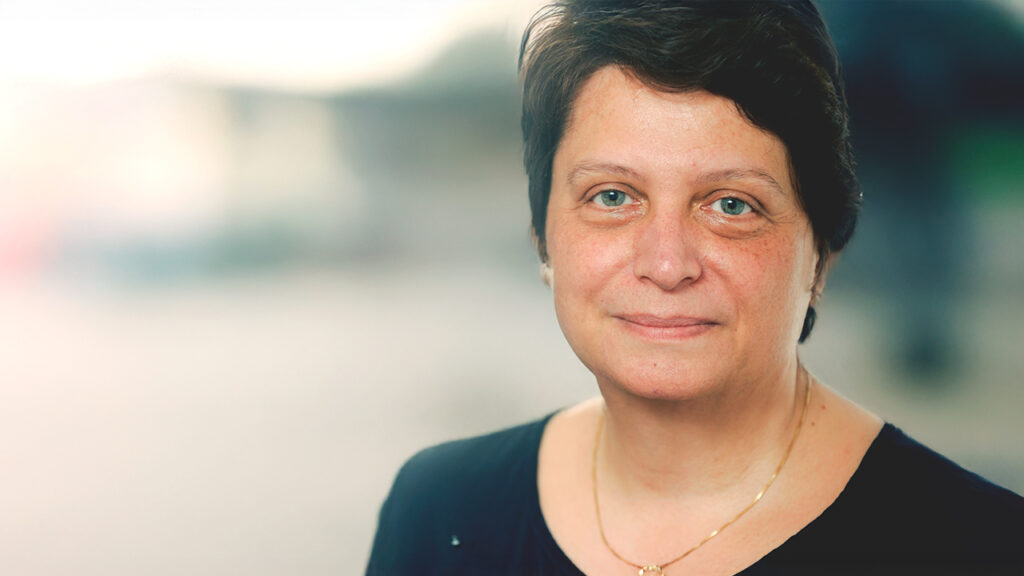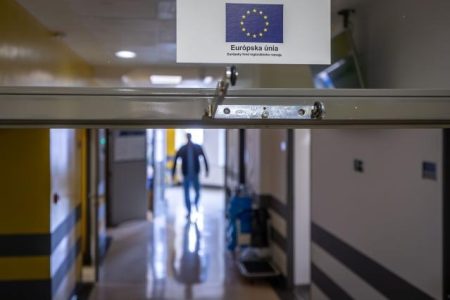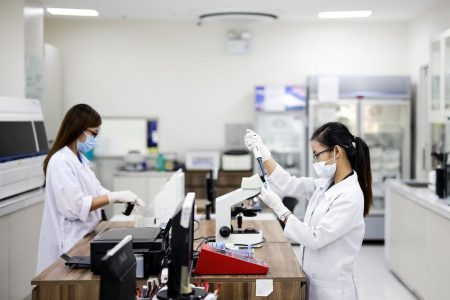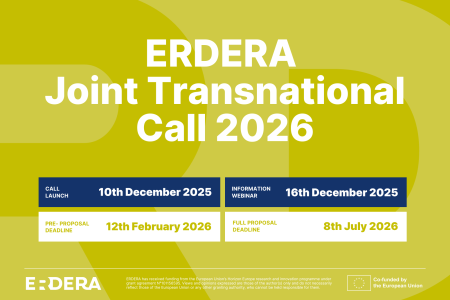ERDERA interviews Magda Chlebus, Executive Director Science Policy & Regulatory Affairs at EFPIA – European Federation of Pharmaceutical Industries and Associations.
Earlier this year, you moderated a session at the RE(ACT) Congress and IRDiRC Conference 2025 on the many challenges in collaboration for rare diseases and hybrid funding models. What were your main takeaways from the discussion?
I identified four key takeaways from the session. First, translating science into products is not a simple journey. No single funding source can support the entire path from discovery to delivery. Therefore, there is a need for multiple funding tools: public, private, and hybrid.
Second, these funding tools are currently fragmented, leading to a lack of continuity across research phases. Researchers often face disruptions when a grant ends, halting progress until new funding is secured from grants, corporate partnerships, or venture capital. To ensure smoother progression, we must support assets throughout the full funding cycle. For example, the EU could facilitate transitions between funding instruments without requiring new competitive calls for each phase.
Third, there is significant potential for enhanced public-private collaboration. More open dialogue is needed—not just to foster cooperation but to deepen mutual understanding. This would allow industry to better support innovative science and help researchers align more closely with industry needs, accelerating the journey from discovery to application.
Fourth and finally, there is a strong desire to collaborate. This momentum isn’t solely a product of political will, such as that reflected in the EU’s competitiveness agenda. It also stems from researchers themselves, across sectors, who are eager to work together. If policymakers provided a clear signal of support and incentives for collaboration, we would see even more of it in the future.
You spoke about smoothing the transition between EU funding instruments. Could you explain what that might look like?
The EU offers various research funding mechanisms. Currently, advancing a project from early-stage research to late-phase development requires applying separately to each tool, each with its own set of rules—without any assurance of being selected again.
Now, imagine a system that identifies and flags high-potential projects—particularly those targeting rare diseases—and enables them to seamlessly move through successive stages of funding. Could the Directorate-General for Research and Innovation (DG RTD) establish a mechanism to allow these projects to receive subsequent funding based on milestones, scientific merit, and evaluations, rather than reapplying from scratch? Such a “fund-forward” approach would help maintain research momentum and avoid unnecessary delays.
What about the role of the private sector?
Private funding is relatively scarce in Europe. Venture capital typically follows companies, and if those companies aren’t focused on rare diseases, neither is the capital. That’s why it’s vital for the EU to actively incentivize venture capital and other funding sources to support startups and small businesses in this space. National governments and EU institutions could initiate meaningful dialogue with these actors to explore incentive structures.
Even if major policy changes take time, are there immediate steps that could foster greater public-private collaboration?
Policymakers should establish robust frameworks that enable pan-European collaborative research. Funding calls should explicitly encourage public-private partnerships. Identifying key areas where such collaboration would be particularly impactful is essential. At the Rare Disease Moonshot, we’ve developed recommendations in areas such as clinical trials, translational research, and diagnostics—each offering significant opportunity for joint work.
What are some common misconceptions about collaborating with industry?
There are several. First, the idea that industry’s only contribution is funding. In reality, industry brings extensive knowledge of the end-to-end R&D process. We offer expertise in regulatory science, which is often underrepresented in academic and startup environments.
Second, there’s a perception that industry partnerships are risky because companies might appropriate intellectual property and commercialize it unfairly. However, we have many examples that show the opposite—mutual benefit and shared value creation are possible.
Third, concerns about conflicts of interest. Hundreds of successful public-private partnerships have proven that conflicts can be effectively managed. The notion that such collaboration is inherently problematic doesn’t align with current realities. Collaboration is not only possible—it is necessary, beneficial, and more straightforward than many assume.
Where does ERDERA fit into the public–private collaboration picture?
ERDERA has made a bold and commendable step in recognizing that while public sector efforts alone may advance science, they cannot always translate it into real-world solutions. By opening its doors to public-private collaboration, ERDERA is sending a strong signal: industry engagement is welcome, essential, and valuable.
Through ERDERA, industry gains early insights into emerging science and helps pave the way for regulatory readiness. Tools developed with industry involvement reduce research risk and enhance applicability. This synergy—where both sides bring complementary strengths—is exactly what accelerates progress. That’s the true promise of what ERDERA is enabling.
Given today’s political climate, how can Europe boost its competitiveness?
Europe is at a critical juncture. It currently lags behind in clinical trial approvals and underinvests in research. Compounding the problem is a highly fragmented environment—with 27 different legislative frameworks, regulatory regimes, and IP rules.
In contrast, research clusters like Boston thrive by offering scale, regulatory coherence, access to talent, and strong IP protection. To compete, Europe must make itself more attractive to investors, whether they are large pharma companies, SMEs, or venture capitalists.
That means creating a legislative and regulatory environment conducive to biomedical innovation. Faster clinical trial processes, more modern frameworks, and defragmentation are all necessary. EFPIA has outlined eight critical measures to enhance competitiveness and make Europe a global hub for rare disease research and development.
What is your outlook for rare disease research? What’s next?
A few years ago, we assessed what it would take to bring treatments to the 95% of rare diseases that currently lack them. The answer wasn’t just one factor, but a combination: competitiveness, cutting-edge science, translational capabilities, and sustainable incentives.
Europe excels in scientific research. To maintain and build on this strength, we need strategic enablers—such as centres of excellence and platforms like ERDERA—to cultivate an ecosystem primed for innovation. ERDERA’s clinical research networks and emerging Accelerator Hub play vital roles in establishing a robust clinical trial environment and in supporting the growth of startups and SMEs.
Smaller companies are increasingly active in rare disease innovation, though large firms also play a critical role. Both the RE(ACT) Congress and IRDiRC Conference 2025 and ERDERA have showcased remarkable work. Now, the focus must shift to translating this research into deployable solutions that are supported by payers, adopted by healthcare systems, and trusted by patients. A centre of excellence built around ERDERA may be more impactful than any broad action plan in achieving that goal.





